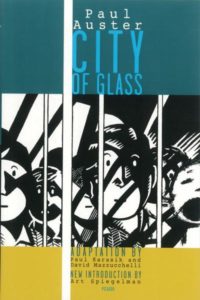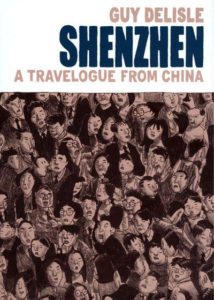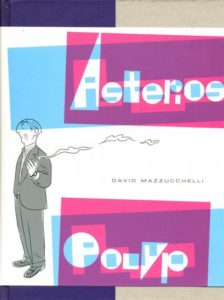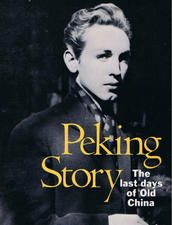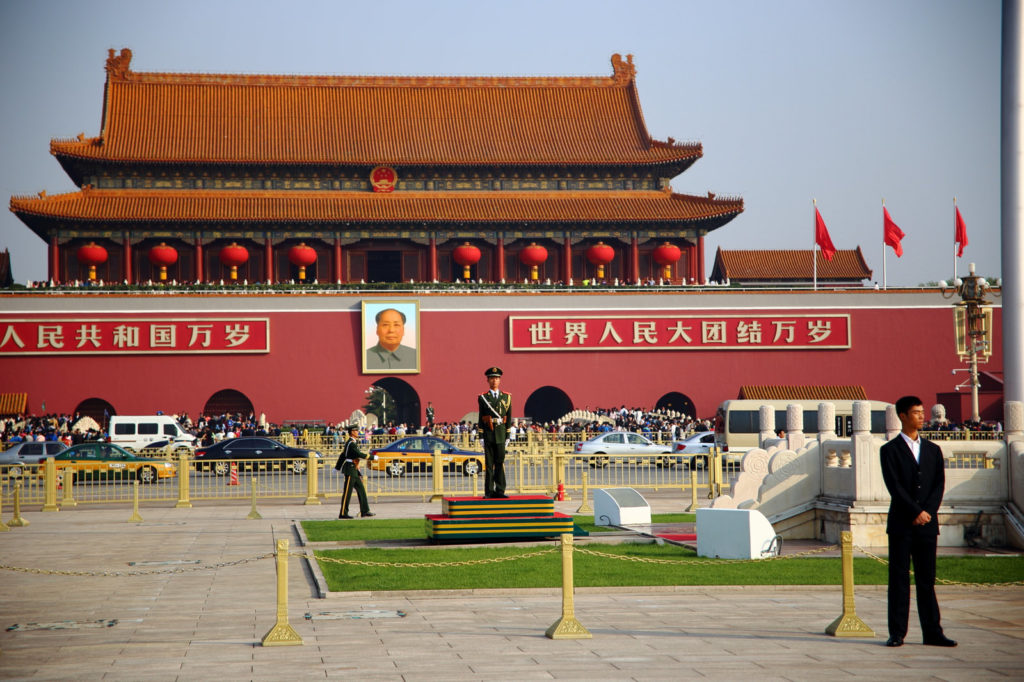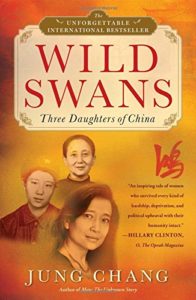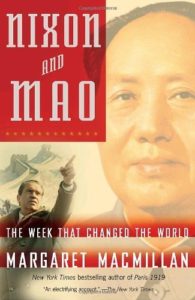
(This was originally written for Astral Codex Ten’s annual book review contest, but did not make it past the first round. I’m posting it here for anyone interested in American political history, as well as for all the Watergate buffs out there. You know who you are. Enjoy.)
“I had this nagging feeling that the Watergate might turn out like the Reichstag fire. You know, forty years from now will people still be asking did the guy set it and was he a German or was he just a crazy Dutchman?”
– Howard Simons, editor, Washington Post
The master narrative
It’s not an airtight truism, but it appears to be a truism all the same: The first widely-accepted telling of a tragedy or scandal establishes it as the narrative all others must react to. The first popular narrative is “sticky,” and difficult to overcome entirely. This is especially true with the Watergate scandal.
Reporters Bob Woodward and Carl Bernstein’s All the President’s Men could arguably be called Watergate’s master narrative, even though the first edition was published in 1974, two months before Nixon resigned. It contains all the elements of the Watergate story, from the scandal’s basic outline to the political implications that rocked the nation.
The remainder of the 1970s saw a Senate committee investigation, the release of numerous Watergate memoirs and tell-alls from Nixon’s aides, and two books from Nixon himself. After a legal battle, Nixon’s White House tapes wound up in the hands of the National Archives. Every few years for four decades, transcripts of the conversations Nixon held in private with his aides were released to the public. (The final batch was released in 2013.)
Amazingly, none of these later revelations did much (if any) damage to the narrative that is All the President’s Men. For the master narrative of a major scandal, it’s proven quite sturdy.
My vote for the most significant challenge to the Woodward/Bernstein narrative is Jim Hougan’s Secret Agenda: Watergate, Deep Throat and the CIA (Random House, 1984). Hougan doesn’t offer a complete re-telling of the scandal, but he does fill in a number of omissions from the master narrative that leads him to many surprising (and some dubious) conclusions.
Hougan did not set out to write another Watergate book. He estimated in 1984 that there were some 150 books on the subject published before his. Secret Agenda emerged from a magazine story he intended to write on a colorful private detective named Louis Russell, an “alcoholic and womanizer” who, in the 1950s, was a “Red hunter” for the House Committee on Un-American Activities. By 1972, Russell was a Washington, D.C. fixture who hung out with call girls and specialized in wiretapping. Hougan’s description makes Russell come across like a character in a James Ellroy novel.
Hougan’s research uncovered that Russell was employed by Watergate burglar James McCord at the time of the break-in. Hougan also learned that Russell was present at the Watergate complex the night of the arrests.
While researching this bit of Beltway serendipity, Hougan came to realize that no one up to that point had done a proper accounting of the Watergate break-in itself. This led him to interview a number of eyewitnesses who’d been overlooked by earlier researchers, such as the arresting police officers. He also obtained via Freedom of Information Act (FOIA) requests “literally thousands of pages” of FBI documents on Watergate that, for most likely internecine reasons, were not made available to the Senate Watergate committee.
To get a sense of the difference between Secret Agenda and All the President’s Men, consider how Woodward and Bernstein’s book opens:
June 17, 1972. Nine o’clock Saturday morning. Early for the telephone. Woodward fumbled for the receiver and snapped awake. The city editor of the Washington Post was on the line. Five men had been arrested earlier that morning in a burglary at Democratic headquarters, carrying photographic equipment and electronic gear. Could he come in?
It’s a terse opening, the kind of brisk pacing one might find in a 1970s political thriller. It also opens the morning after the Watergate burglary. Woodward and Bernstein do touch on the burglary itself, but—like most other histories of Watergate—they don’t delve deeply into the break-in’s motivations, planning, or execution. Rather, they focus on the subsequent cover-up orchestrated by the Nixon White House.
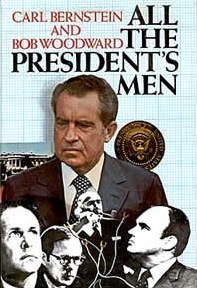
And why should they focus on the break-in? The burglars were caught red-handed. They all pled guilty to the crime. As Hougan writes:
Because the burglars had been caught in the act, the burglary itself had not seemed to warrant intensive investigation. The best efforts of the press, the Senate and subsequently the special prosecutor were therefore applied to questions of political responsibility and culpability in the cover-up. For that reason, many questions about the break-in had been left unanswered—not the least of which was its purpose. [Emphasis mine.]
Those unanswered questions include: Why did the burglars break into the headquarters of the Democratic National Committee (DNC)? What did they expect to learn? And who ordered it? Fifty years after the fact, these basic questions have not been firmly answered.
More explosively—or absurdly, depending on your inclination—Hougan proposes Watergate “was not so much a partisan political scandal as it was, secretly, a sex scandal, the unpredictable outcome of a CIA operation that, in its simplest terms, tripped on its own shoelaces.” He proposes a high-priced call-girl ring in a nearby apartment complex was the actual motive for the break-in. He also speculates the CIA sabotaged the break-in to protect the Agency’s interests.
This might make Secret Agenda sound like sensationalized conspiracy-minded rubbish. It doesn’t help that Secret Agenda has been so overlooked that it’s now out-of-print and nearly forgotten.
The reputation Secret Agenda has earned in Watergate circles comes not in copies sold, but in its influence. Watergate researchers admit Hougan’s work is significant, and have incorporated its revelations into their own histories. BBC journalist Fred Emery (author of the superb Watergate: The Corruption of American Politics and the Fall of Richard Nixon) wrote in 1994 that Secret Agenda
effectively explodes the version of the first break-in told at the time. It was never properly investigated, mainly because the FBI, federal prosecutors, and eventually congressional committees became, understandably, more interested in political responsibilities than in forensic detail. Hougan’s is the most thorough expose of all the break-in anomalies. His revisionist version raises perhaps more questions than it answers and Hougan honestly admits ending up in many a cul-de-sac.
This, to me, is what’s required when reading Secret Agenda: To recognize when Hougan is working from corroborated or, at least, primary sources, and to smell when he’s off in a “cul-de-sac” and wildly speculating. As I read the book, I found myself wrestling with Hougan’s wilder claims and wishing he would stick to more sure-footed research.
Still, after shaking out the dross, I remain convinced that there is much gold to be panned here, if we’re ever to understand the entirety of the Watergate scandal.
Prelude to the break-in
Hougan’s book launches with biographies of two of the break-in accomplices: E. Howard Hunt and James McCord, both long-time operatives for the CIA.
Hunt’s bio is the more evocative of the pair. His intelligence career began at the Office of Strategic Services (OSS) during World War II before joining the CIA. He was involved in the Guatemalan coup of 1954 and the Bay of Pigs fiasco. On the side, he penned dozens of spy thrillers and adventure pulps about soldiers-of-fortune and treasure hunters.
McCord, on the other hand, was phlegmatic, hard-working, and demanding—a Baptist Bible-thumper. His resume is less documented than Hunt’s, and what’s known is less colorful. Hougan paints Hunt as cosmopolitan and adventurous, and McCord as the quiet technician who organized the team and got things done. He also presents the pair as the true leads in the Watergate break-in.
This arrangement turns the usual org chart presented by Watergate books on its head. G. Gordon Liddy is generally depicted as the leader of the White House Special Investigations Unit, the secret political team dubbed the Plumbers because they “fixed leaks.” Hunt (and, later, McCord) were nominally underlings taking orders from Liddy. Hougan submits that Hunt was the de facto ringleader.
Liddy was no slouch—he was ex-FBI and ex-Treasury Department before joining the White House—but his resume was not of the same caliber as Hunt’s. Liddy was brazen, outspoken, reactionary, and fond of guns. It’s easy to write him off as a big-mouthed goon. In Watergate circles, however, his 1980 memoir Will is considered one of the more reliable among the tell-alls penned by Nixon’s other men. Liddy also appears to be the only Nixonite who thought his role in the scandal enhanced, rather than stained, his legacy.
Notably, it was Hunt, not Liddy, who rounded up the men the Plumbers would use for their black bag operations. They were a loose confederation of Floridians dubbed “the Cubans,” although not all were Cuban. (They all appear to have been involved with the Bay of Pigs invasion, however.) Hunt spoke fluent Spanish, meaning Liddy had to go through him to communicate with some of the men he was ostensibly leading. Hougan asserts, with evidence, that all the Cubans remained affiliated with the CIA one way or another. In other words, everyone involved with the Watergate break-in—except Liddy and lookout man Alfred Baldwin—had ties to the Agency.
The Plumbers were first organized by Nixon’s White House in response to the leaking of the Pentagon Papers by Daniel Ellsberg. The group’s earliest mission was to break into Ellsberg’s psychiatrist’s office and photograph his medical file.
(Later, the White House team began to work with members of Nixon’s reelection campaign, where Liddy was reassigned. Calling these configurations “Plumbers” is a bit of a misnomer. For clarity, the team is referred to by their nickname whether or not all involved were members of the original Special Investigations Unit.)
Hougan is at his best when he’s covering the nuts-and-bolts of the Plumbers’ operations, and that includes the Ellsberg break-in. (As with the Watergate burglary, most narratives before Secret Agenda avoid investigating the execution of the Ellsberg break-in and stick to decoding its political implications.) Hougan pieces together the minutiae of the operation from disparate sources: Senate testimony, FBI and police reports, interviews, memoirs, and so on. He’s also good at weighing all the discrepancies in the stories. Like a fair-minded boss who insists all voices are heard in a meeting, he airs the Rashomon-like contradictions and attempts to synthesize them, reluctant to discard anything “just because.”
But as happens so often in the book, Hougan finds an unsubstantiated tangent, or a loose thread, or a whispered rumor, and runs with it. In this case, he writes that the CIA in the early 1970s was producing verbal models on foreign leaders (via “parapsychology”). These “machines” could predict those leaders’ reactions to a variety of political events and upheavals. Hougan speculates the CIA planned to turn this innovation on Americans. Once Hunt placed Ellsberg’s psychiatric file in the Agency’s hands, they would produce an “Ellsberg machine.” Even if the claim is entirely accurate, it contributes little to understanding the Plumbers and the Watergate episode.
This is the big problem with reading Secret Agenda, this constant need to sift the wheat from the chaff. I cannot imagine such a convoluted assertion making it into the pages of All the President’s Men, not even to dismiss it.
Watergate
Secret Agenda’s best chapters are devoted to the Watergate burglaries. As with the Ellsberg break-in, he paints a full and convincing picture by weaving together a multitude of often contradictory sources into a semi-cohesive story.
Over the Memorial Day weekend in 1972, the Plumbers tried three times to enter the DNC headquarters at the Watergate complex. The first attempt was a bizarre evening. The Plumbers rented an event room at the Watergate under the pretense of holding a corporate business party. (Stupidly, the Plumbers reserved the room under the name of a shell company registered to one of the Cubans.) The evening concluded with Hunt and one of the Cubans hiding in a closet after the others had left. The plan was to emerge later, allow the others to re-enter through a side door, and sneak upstairs to the DNC. Instead, like a French farce, the pair were locked inside the event room all night, and could only leave when building staff let them out the next morning. After another embarrassing failure on the second night, the group gained entry to the DNC on the third.
For reasons unexplained by anyone involved, one of the bugs they set was placed on a phone in R. Spencer Oliver’s office.
Oliver was a coordinator of Democratic state-level activity, and not associated with the presidential campaigns still ongoing in 1972. His job meant he was on the road a great deal. Why the Plumbers or the White House would be interested in Oliver’s phone is one of the great mysteries Hougan uncovers. He spends a number of pages attempting to get to the bottom of it. In fact, it becomes the crux of his theory as to why the burglars entered the DNC in the first place.
The other wiretap target, DNC chairman Larry O’Brien’s telephone, makes more sense at first, but less so on further consideration.
O’Brien wasn’t in D.C. during this time; he was in Miami preparing for the Democrat’s national convention. According to Liddy, the DNC was a “worthless” target, and this was echoed by many of Nixon’s men after the scandal unfolded. Liddy complained that bugging the campaign headquarters of presidential aspirants Edmund Muskie and George McGovern would have produced far more actionable intelligence for the Nixon reelection campaign. (The Plumbers did stake-out McGovern’s headquarters for entry, but failed to follow through.)
Once the bugs were in place, Liddy demanded daily reports of the DNC phone recordings, which he planned to cull and pass upward to White House leadership. Liddy was denied access to the raw conversations, though, because CIA technician James McCord refused to use tape recorders. Rather, an employee of McCord’s private security firm, Alfred Baldwin III, was to room in a Howard Johnson hotel across the street from the Watergate, wait for the bugged phone calls to come over a receiver, and transcribe the conversations by hand. These were typed up into summaries.
Thus, McCord controlled access to the intelligence, supplying Liddy the typed summaries rather than verbatim transcriptions. It’s another reason why Hougan thinks Hunt and McCord were the real ringleaders of the operation.
This is where an already complicated story goes from knotty to Gordian.
What Baldwin did hear over the bugs appears to be exactly the worthless garbage Liddy predicted they’d get. The mysterious wiretap on Oliver’s phone produced little more than a series of risqué conversations. With Oliver traveling so often, it’s speculated that DNC staff used his office as a “phone booth” for making private calls, and that Baldwin was listening in on secretaries erotically teasing their boyfriends. Hougan makes a different connection.
The Columbia Plaza stood near the Watergate complex. A high-priced call-girl ring operated within its apartments, one that was broken up by D.C. police the weekend before the final, fateful Watergate break-in. The call girls were still in full swing when the burglars first planted their phone taps. Hougan speculates Oliver’s private phone was used by the Democrats to arrange assignations with the call girls for high-ranking party members visiting from out of town. If so—and if the CIA was aware of the practice—tapping Oliver’s phone makes much more sense.
Whether the bugs were faulty, had dead batteries, or simply ill-placed and not obtaining the high-quality political intelligence the White House craved—explanations differ—three weeks later, the order came down for one more break-in of the DNC headquarters.
Hougan’s chapters covering the final break-in are Secret Agenda’s centerpiece, which it should be, as it’s why Hougan set out to write a Watergate book in the first place. He offers a rich and surprising narrative of the fateful night, including several near-misses which could have radically altered American history. A sample of some of the craziness:
- Plumber Frank Sturgis ran into Burt Lancaster hours before the break-in. Hunt and McCord had a similar star-struck moment in the Watergate Hotel elevator with French actor Alain Delon. (Both actors were in D.C. filming the Cold War thriller Scorpio.)
- The Watergate burglars infamously entered the Watergate late at night by taping the latches open on a side door. Hougan reveals there’s quite a bit of confusion on how and when the latches were taped, and who did the taping.
- Although they successfully entered the DNC’s headquarters weeks earlier, this night the burglars were unable to pick the front door lock. They resorted to taking the door off its hinges and removing it from the frame.
- On the eighth floor of the Watergate building, two stories above the DNC’s headquarters, were offices for the Federal Reserve Board, which had its own set of guards patrolling the building. Amazingly, none of them detected the burglars or the taped doors.
- Almost all the principal figures in the Watergate drama wind up at one point or another at the Howard Johnson’s coffee shop across the street for a late-night snack. This includes Frank Wills, the Watergate security guard who discovered the taped latches on the ground floor doors and called the police.
- Wills is usually depicted as acting immediately upon discovery of the taped doors. He was actually reluctant to notify the police. Instead, he made multiple furtive calls to his bosses at the security firm he worked for. His run across the street for take-out further delayed calling the police.
- Around 2 am, during the arrests, police spotted a white male leaving the Watergate lobby. The FBI later declared him the “sixth man” of the entry team. He remains unidentified.
Most surprisingly, Hougan’s meticulous chronology proves Wills’ reluctance to call the police—and his late-night food run—actually led to the burglars’ arrest! No arrests, no Watergate scandal—no Nixon resignation.
“Take all the cameras you need!”
Secret Agenda touches on the aftermath of the break-in, with Nixon’s men frantically destroying evidence and arranging legal representation for the detained men, before winding down. The book doesn’t go deep on the subsequent political cover-up, which is the focus of All the President’s Men. Secret Agenda isn’t a “follow the money” book. Reading it alone to understand the entirety of the scandal would be a mistake.
(Hougan does burn up a chapter to partake in the then-fashionable parlor game of “Who was Deep Throat?” He leans toward Alexander Haig—a swing and a miss.)
Returning to my earlier questions: Why did the burglars do it? What did they expect to find? And who ordered the break-ins?
Last question first: Jeb Magruder ordered the final break-in. (By then, Magruder was Deputy Campaign Director at Nixon’s reelection committee.) In an uncharacteristic display, Magruder yelled at Liddy: “Take all the men, take all the cameras you need!” He slapped the lower drawer on his desk with a bang, indicating he wanted some secret filed away in the DNC.
The Colombia Plaza call-girl ring had been busted three days earlier. Nixon’s men had pressured the D.C. district attorney to turn over the ring’s “trick books” to see if any White House personnel were implicated. With the election mere months away, the call-girl ring was the scandal du jour at the White House. Hougan speculates Magruder was “galvanized” by the vice bust and ordered the second break-in to clean up the wiretap situation.
But who ordered the initial break-in three weeks earlier is less certain. Magruder did send in Liddy’s team the first time (“a waste of time and money, in Liddy’s view”), but it’s never persuasively concluded who made the order to Magruder. Attorney to the President John Dean wrote of confronting Magruder on the subject while both were in prison. “Why did we go into the DNC?” Dean demanded. “Whose idea was it?” Magruder merely stormed off.
A common explanation for the break-in is that the White House wanted to know what incriminating evidence DNC chairman Larry O’Brien may have had on Nixon, either regarding political favors for telecom corporation ITT, or a payoff made to Nixon from Howard Hughes. As Hougan points out, both explanations suffer.
On the first point, Liddy met with White House officials about several “targets of opportunity.” He’s adamant the initial order to break into the Watergate only came from Magruder months after the ITT issue had been discussed. (“While Liddy has been called many things,” Hougan writes, “‘liar’ is not one of them.”) The Plumbers’ other covert operations had nothing similar in terms of time lag.
As for the second possibility, Nixon’s worries about Hughes, the Plumbers were tasked to break into Las Vegas newspaper publisher Hank Greenspun’s office (due to him being “deeply enmeshed in the reclusive billionaire’s affairs”) and to rifle his safe for incriminating documents, either on Nixon or his presidential opponent Muskie. (The break-in never occurred. Also: Greenspun was a lifelong Republican!) It’s too bad Hougan could not have gone deeper on the Hughes angle.
Hougan suggests another possibility for the final entry: To de-bug the Democrats’ phones.
His reasons are not far-fetched. In the aftermath of the arrests, neither the phone company nor the FBI found any wiretaps in the DNC offices. The FBI went so far in their reports to theorize the DNC’s phones were never bugged in the first place. The transcripts produced by Baldwin from the Howard Johnson’s would seem to disprove such a wild claim.
(Of course, the notion that the Plumbers were in the DNC to remove wiretaps is pretty wild too, but notice how Magruder ordered Liddy to “take all the cameras you need”—not wiretaps, but cameras.)
This leads to a full chapter on an all-but-forgotten episode in Watergate history: A few months after the arrests, the Democrats announced they discovered a new bug in the DNC. This “September bug” was found on the ever-fascinating telephone of R. Spencer Oliver.
The FBI and the attorneys prosecuting the Plumbers went round and round pointing fingers. Did the FBI and the phone company miss the bug in their earlier sweep? Did the Democrats plant the bug and “find it” for political points? Was it placed after the arrests by another covert operation? Again, Hougan comes up with his own, somewhat convoluted theory that’s too thorny to cover here. Even if it’s hard to accept, the entire episode is a further indicator of just how tangled the Watergate break-ins are to decipher.
Another tantalizing detail Hougan uncovers via the FOIA FBI documents (and confirmed by arresting D.C. police officer Carl Schoffler) is that one of the Cubans carried a notebook with a key taped to it. The FBI later determined the key opened only one lock in the office: the desk of Ida “Maxie” Wells, secretary to—wait for it—R. Spencer Oliver. During the break-in, the Cubans had assembled a photographic stand on Wells’ desk, apparently in preparation for taking pictures of something inside the locked drawers. Whatever it all means, it does suggest Larry O’Brien was not the sole target that night.
Liddy tells a funny story in his memoir that’s recounted in Secret Agenda: One of Liddy’s early proposed plans was to lure Democrats aboard a Miami party yacht stocked with prostitutes, cigars, and liquor, for blackmail purposes. When the idea was shot down, Jeb Magruder suggested they bring the women to D.C. Liddy rebuffed him: “I told Jeb that bringing whores to Washington was like shipping cars to Detroit…If [Magruder] could justify a trip to Miami, could I fix him up with our girls? Jesus, I thought, the wimp can’t even get laid with a hooker by himself.”
Hougan—always on the lookout for connections, no matter how tenuous—notes that bugging Oliver’s phone (if it was used by the Democrats to contact the call-girl ring) has echoes of Liddy’s earlier Miami plan.
Hougan offers several combinations of reasons why he believes the call-girl ring was the true motivation for entering the Watergate—from White House fears to CIA cover-up—but none of them are especially persuasive to me. The real value in Secret Agenda comes from the other more grounded details on the break-in he dredges up.
Was it Nixon?
The nagging questions that remain unanswered about Watergate—Who ordered the first break-in? Why Watergate?—usually elicit names higher up the chain: H.R. Haldeman (Chief of Staff), John Mitchell (Attorney General, later the head of Nixon’s reelection campaign), or Nixon himself.
For some, there is no mystery. Journalist Ron Rosenbaum thinks historians have timidly skirted the issue and let Nixon off scot-free with a hasty resignation and a free flight to California. For Rosenbaum, circumstantial evidence is more than sufficient:
Nixon is heard on a recording made two days after the news broke of the break-in proclaiming that he was shocked by it and—knowing the tape is rolling—saying it was silly for anyone to break into the Democratic National Committee party headquarters because any savvy pol would know that all the valuable dirt would be found in the (yet to be named) presidential candidate’s headquarters.
And then he delivers one of his most inculpatory statements on tape: “That’s my public line.” In other words, that was how he was going to lie his way out of any connection…
There’s a mild contradiction here: Nixon knows the phone call is being recorded and feigns shock at news of the break-in—then admits into the tape recorder he’s going to lie his way out of it? I don’t doubt Nixon at least suspected his re-election committee was involved. I just don’t see those four ambiguous words (“That’s my public line”) proving Nixon ordered the break-in.
Another point propping up Rosenbaum’s (and others’) argument: In 2003, Magruder claimed to have heard Nixon issue the order:
Magruder said he could hear Nixon tell Mitchell, “John, … we need to get the information on Larry O’Brien, and the only way we can do that is through Liddy’s plan. And you need to do that.” … Magruder concedes that he did not hear every single word while Nixon was on the phone with Mitchell, but “I heard the import,” he said.
Magruder’s allegation is explosive—and one he could’ve made in his 1973 memoir (where he states Nixon had no foreknowledge of the break-in), or at any point in time thereafter. Never mind that Liddy did not propose the DNC as a target, and steadily asserted for years his opposition to wasting time and resources on it. Thus, in 2003, Magruder claimed to have lied and withheld for thirty years—on top of conspiring to cover-up the Watergate criminal acts—and now should be believed.
Hougan goes to great lengths to air all the players’ recall of each event, but one person he cannot help but slam is Magruder. In almost every White House meeting Magruder attends, the others involved more-or-less agree in their recollections. Magruder always spins a wildly different take. Generally, it’s a take that exculpates himself. “To believe Magruder, then, one must also believe everyone else is lying,” Hougan writes.
Still, for people like Rosenbaum, Nixon was guilty, and that’s that: Come on—we all know Nixon did it. But as Glenn Garvin wrote in 2022, “Fifty years later we still don’t know who ordered the core crime or why.” Nixon was guilty of plenty, but that guilt doesn’t answer the question of why the DNC headquarters were targeted, or prove Nixon masterminded the break-in.
An intentionalist view would say that the only way the Plumbers would have broken into the DNC is if Nixon ordered them to do it. Such commands don’t originate from a lowly assistant, goes the reasoning.
The problem is that there’s no evidence of such an order. Even with a taping system in place, testimony and memoirs, and physical documentation preserved, no one has found any hard evidence that Nixon ordered the Watergate break-in.
A functionalist explanation would approach the problem from another angle. It would say that Nixon nurtured a culture encouraging such activities. His inferiors sought to curry favor by meeting, or exceeding, his expectations. Political advantage became the currency of patronage, where an individual is rewarded for bringing capital into the organization—intelligence, leverage, and so on.
Here’s Nixon ordering a break-in of the Brookings Institution on June 30, 1971, a full year before the Watergate burglary:
“You’re to break into the place, rifle the files, and bring them out. … Go in around 8 or 9 o’clock. That’s right. You go in and inspect and clean it out. … We’re up against an enemy, a conspiracy. They’re using any means. We are going to use any means. Is that clear?”
Although the burglary never took place, the Brookings order is far more damning than his “public line” conversation or Magruder’s claims. The conversation proves Nixon is capable of ordering a crime on the magnitude of the Watergate break-in.
But as the Nixon tapes make clear, Nixon didn’t merely order a burglary of the Brookings Institution, he couldn’t shut up about it. He kept discussing the idea, and even ordered it again a year later. (“…get in there and get those files. Blow the safe and get them.”) If Nixon ordered the Watergate break-in, he was awfully quiet about it, whereas he was more than verbal about a similar, and more violent, burglary.
His order for Haldeman to “blow the safe” at Brookings set off a chain of events in the Nixon White House. Those events culminated with Nixon aide Charles Colson (purportedly) planning to firebomb the institute’s headquarters. (“Not just a fire, a firebombing.”) The order mutated from “break into the place, rifle the files” to deadly arson.
Liddy tells of a similar mutation, where an idle comment that “we need to get rid of that [Jack] Anderson guy” was interpreted as a call to assassinate the journalist, which he and Hunt discussed with a CIA physician. (The plan never amounted to anything more than talk.)
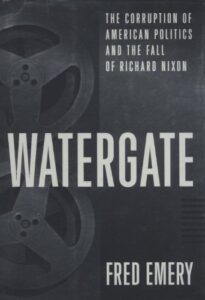
In Fred Emery’s Watergate, Colson recalls a meeting with Nixon regarding the recent assassination attempt by Arthur Bremer on presidential candidate and segregationist George Wallace:
Nixon’s having a cocktail, he’s sitting there with his feet back, we’re waiting for the FBI to call. As happened hundreds of times under those circumstances, he would say, “Wouldn’t it be great if…oh, wouldn’t it be great if they had left-wing propaganda in [Bremer’s] apartment?”
Sure enough, Liddy confirmed in 1980 he and Hunt sought to plant left-wing literature in Bremer’s apartment, but the FBI had already sealed the apartment. A verbal musing by Nixon—however feigned in innocence it may have been steeped—trickles down the power ladder as a call to illegal action.
Another example is the forged “Canuck letter” that destroyed the presidential campaign of Edmund Muskie. It was penned by Nixon spokesman Ken Clawson mere weeks after he joined the administration. It appears he wrote the letter as a kind of frat-boy initiation rite to prove his loyalty to the president. A demonstration of fealty wrecks a presidential campaign.
Did Nixon order the Watergate break-in? If he did, not having a recording or a reliable contemporaneous account of it may be the biggest Watergate miracle of all. But a functionalist reading of executive power suggests why: Nixon fostered a culture of patronage whose currency was dirty tricks and illegal acts, which he could later deny originated from his office.
As Colson told a Nixon biographer, “You could always get rewarded if you showed up at the White House with a bit of negative intelligence, so the puppies kept coming in with their bones.”
The lessons of Watergate
Secret Agenda is a curious book on the rather long shelf of Watergate literature. Unlike other histories, which mostly recount the same events and profile the same personalities, Secret Agenda strikes out to cover territory overlooked by the others. Its minute-by-minute accounting of the Plumbers’ covert operations sometimes reads like a thriller and sometimes like farce, but is marred by Hougan’s propensity to wander into wild speculation.
“What follows in this book does not pretend to be a ‘definitive’ account of the Watergate affair,” Hougan admits in the introduction. “It is simply an attempt to correct the record insofar as it is possible to do so, and to suggest avenues of further investigation.”
Yet Secret Agenda left behind a remarkable footprint on that shelf of Watergate literature. Hougan’s research found its way into Fred Emery’s Watergate, the first cohesive post-1970s history of the entire scandal, and Garrett Graff’s more recent Watergate: A New History. Joan Hoff points out in Nixon Reconsidered that “of all the theories to surface claiming to explain the reason for the Watergate break-in, none has been adequately documented. One, however deserves mention,” namely, Secret Agenda.
My Occam’s razor-ish take on Secret Agenda goes something like this:
I cannot help but find myself persuaded by the CIA connections Hougan dwells upon. The CIA did assist the Plumbers with disguises, fake identification, and equipment; this is documented elsewhere. What’s more of a stretch is the suggestion that the CIA was secretly running (or sabotaging!) the Plumbers’ operations without the knowledge of Liddy, Magruder, or the White House.
The White House employing Hunt to gather political intelligence dropped a gift in the CIA’s lap. Hunt could share with the Agency anything gathered by the Plumbers. That meant the White House was funding intelligence-gathering for the CIA’s benefit, and the White House assumed all the risk if caught. For the CIA, what’s the downside? Although the source of Ida Wells’ desk key is a mystery that may never be solved, “the CIA supplied it” is a plausible hand-wavey answer, considering what we know about its activities in that time period.
As for the true reason behind the break-in, it appears everyone involved had their own motivations, often in conflict. Some of those involved had the opportunity to act on those motivations. Hougan does not convince me that the call-girl ring motivated the break-in. However, the timing of the vice bust in relation to the second break-in, and the bug on Oliver’s phone, does make it seem a potential sex scandal was on some of the Watergate players’ minds.
I can’t help but think if we knew what was in that locked desk, and why Oliver’s phone was targeted, we would have a far better idea of what they were after.
After all, what are the lessons of Watergate? No lessons may be learned until the problem is understood, and on that count, we appear to have come up short.
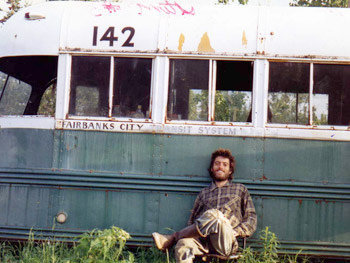
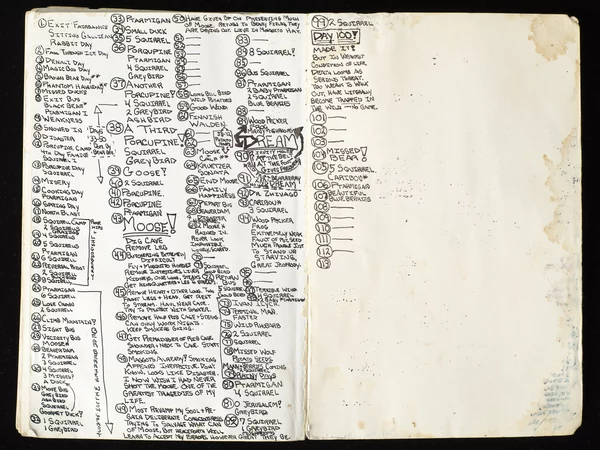
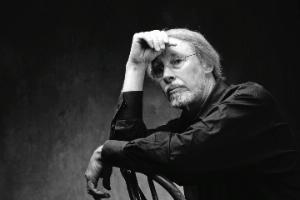

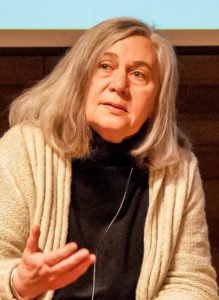

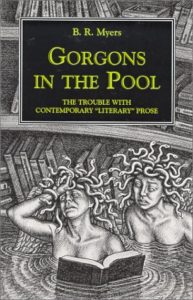

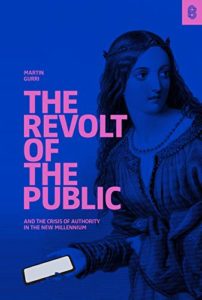
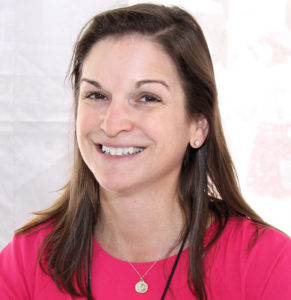

 So far in this series, about half of the books I’ve discussed have been nonfiction and the other half fiction. This is the first time I’ve written about a text on critical theory—and it may be the best lit crit book I’ve ever encountered.
So far in this series, about half of the books I’ve discussed have been nonfiction and the other half fiction. This is the first time I’ve written about a text on critical theory—and it may be the best lit crit book I’ve ever encountered.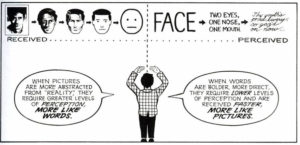
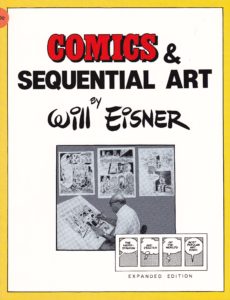 Before Eisner, books on comics focused on technical production: inks, scripting, musculature, shading, etc. (The most prominent example I know of is How to Draw Comics the Marvel Way, the standard go-to guide for aspiring fourteen year-olds back in the day.) Comics & Sequential Art focused on the language of comics, much as a book on film theory would discuss camera angles and shot selection as the “language” of movies.
Before Eisner, books on comics focused on technical production: inks, scripting, musculature, shading, etc. (The most prominent example I know of is How to Draw Comics the Marvel Way, the standard go-to guide for aspiring fourteen year-olds back in the day.) Comics & Sequential Art focused on the language of comics, much as a book on film theory would discuss camera angles and shot selection as the “language” of movies.
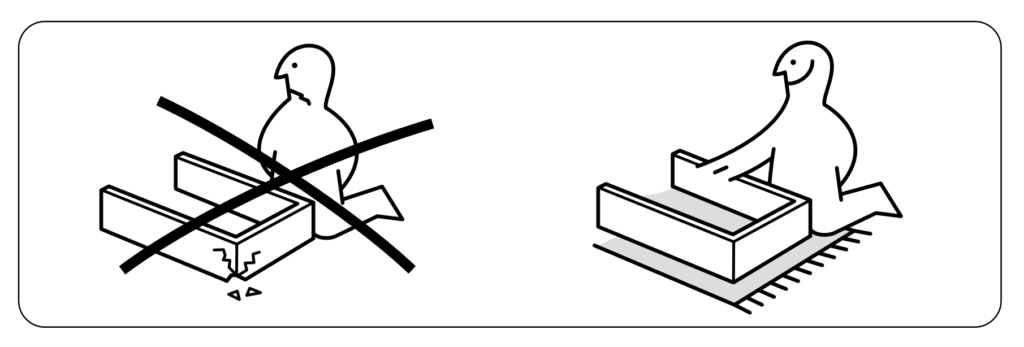
 McCloud dogfooded comics. His entire thesis, from first page to last, is told in comic form. He demonstrates the ubiquitousness and power of comics by drawing comics. The only places McCloud “reverts” to pure text are the Acknowledgments and Bibliography pages (where he can be forgiven, since I doubt anyone wants to read a Bibliography set to comic form).
McCloud dogfooded comics. His entire thesis, from first page to last, is told in comic form. He demonstrates the ubiquitousness and power of comics by drawing comics. The only places McCloud “reverts” to pure text are the Acknowledgments and Bibliography pages (where he can be forgiven, since I doubt anyone wants to read a Bibliography set to comic form).
